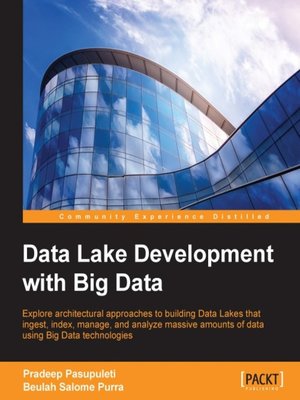
Sign up to save your library
With an OverDrive account, you can save your favorite libraries for at-a-glance information about availability. Find out more about OverDrive accounts.
Find this title in Libby, the library reading app by OverDrive.



Search for a digital library with this title
Title found at these libraries:
| Library Name | Distance |
|---|---|
| Loading... |
Explore architectural approaches to building Data Lakes that ingest, index, manage, and analyze massive amounts of data using Big Data technologies
About This Book
Who This Book Is For
This book is for architects and senior managers who are responsible for building a strategy around their current data architecture, helping them identify the need for a Data Lake implementation in an enterprise context.
The reader will need a good knowledge of master data management, information lifecycle management, data governance, data product design, data engineering, and systems architecture. Also required is experience of Big Data technologies such as Hadoop, Spark, Splunk, and Storm.
What You Will Learn
In Detail
A Data Lake is a highly scalable platform for storing huge volumes of multistructured data from disparate sources with centralized data management services. It eliminates the need for up-front modeling and rigid data structures by allowing schema-less writes. Data Lakes make it possible to ask complex far-reaching questions to find out hidden data patterns and relationships.
This book explores the potential of Data Lakes and explores architectural approaches to building data lakes that ingest, index, manage, and analyze massive amounts of data using batch and real-time processing frameworks. It guides you on how to go about building a Data Lake that is managed by Hadoop and accessed as required by other Big Data applications such as Spark, Storm, Hive, and so on, to create an environment in which data from different sources can be meaningfully brought together and analyzed.
Data Lakes can be viewed as having three capabilities—intake, management, and consumption. This book will take readers through each of these processes of developing a Data Lake and guide them (using best practices) in developing these capabilities. It will also explore often ignored, yet crucial considerations while building Data Lakes, with the focus on how to architect data governance, security, data quality, data lineage tracking, metadata management, and semantic data tagging. By the end of this book, you will have a good understanding of building a Data Lake for Big Data. You will be able to utilize Data Lakes for efficient and easy data processing and analytics.
Style and approach
Data Lake Development with Big Data provides architectural approaches to building a Data Lake. It follows a use case-based approach where practical implementation...







